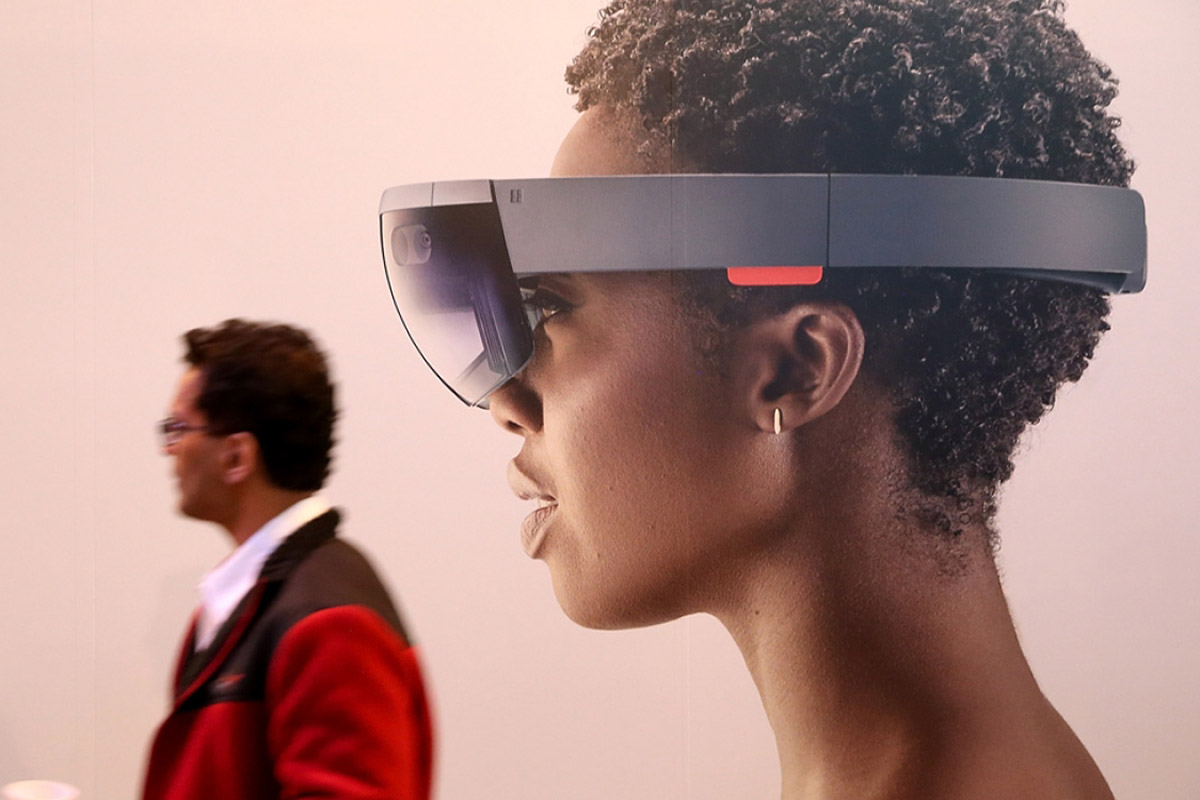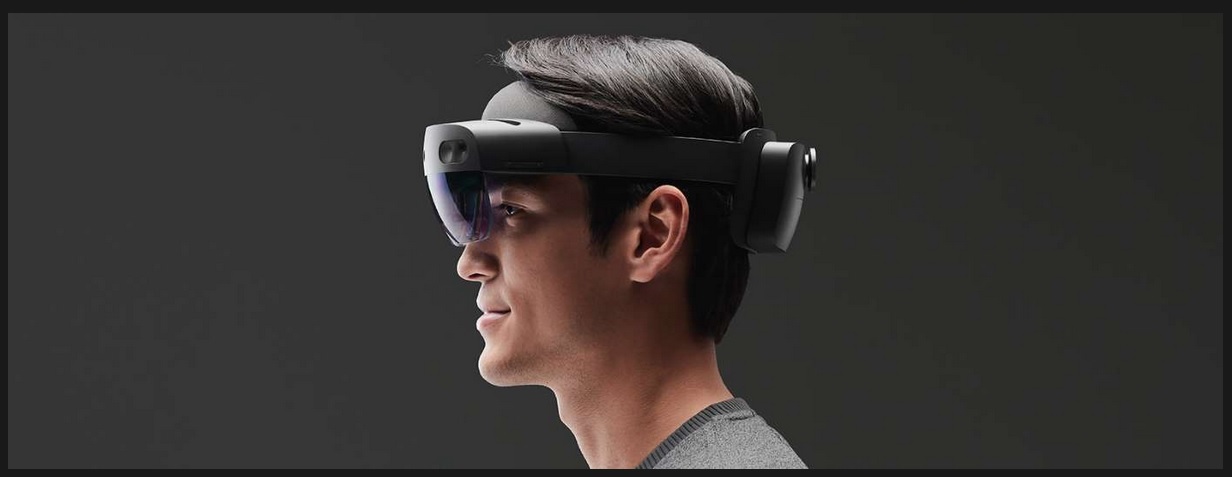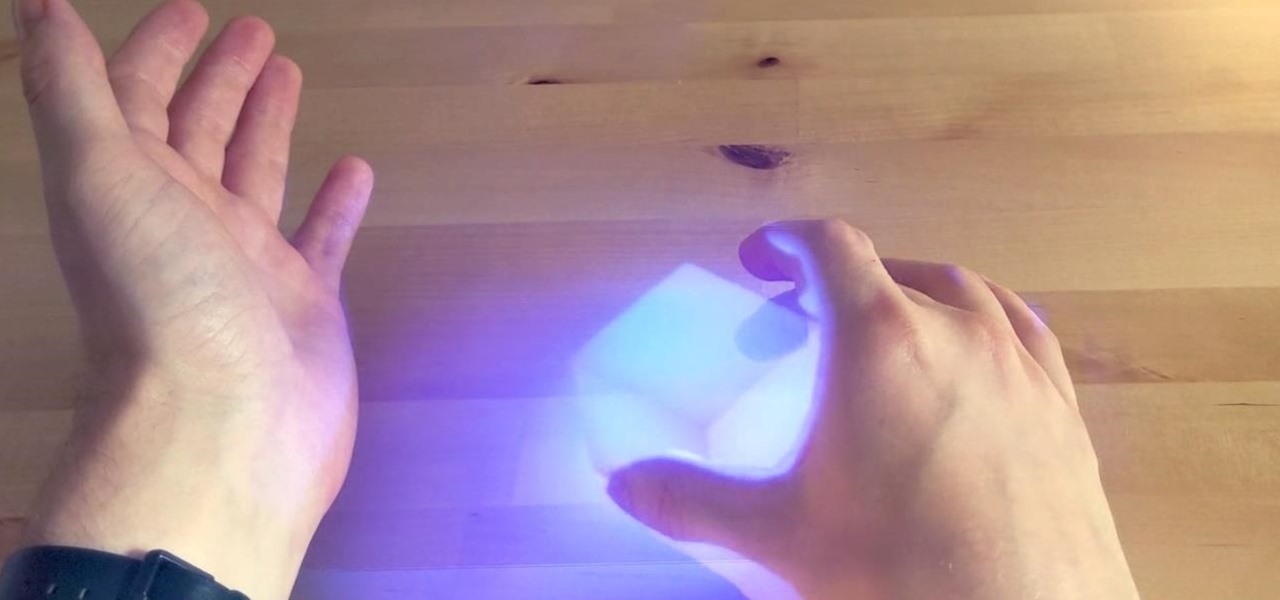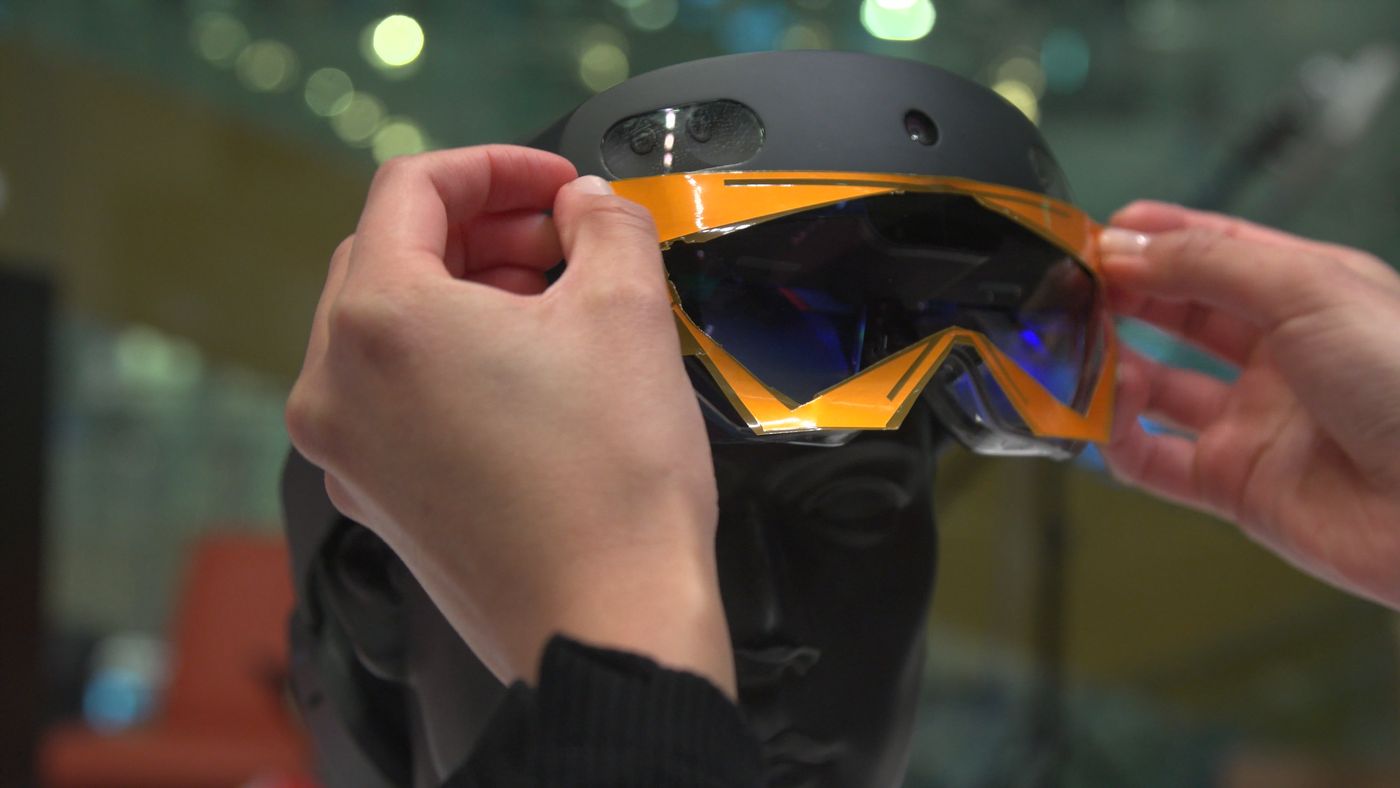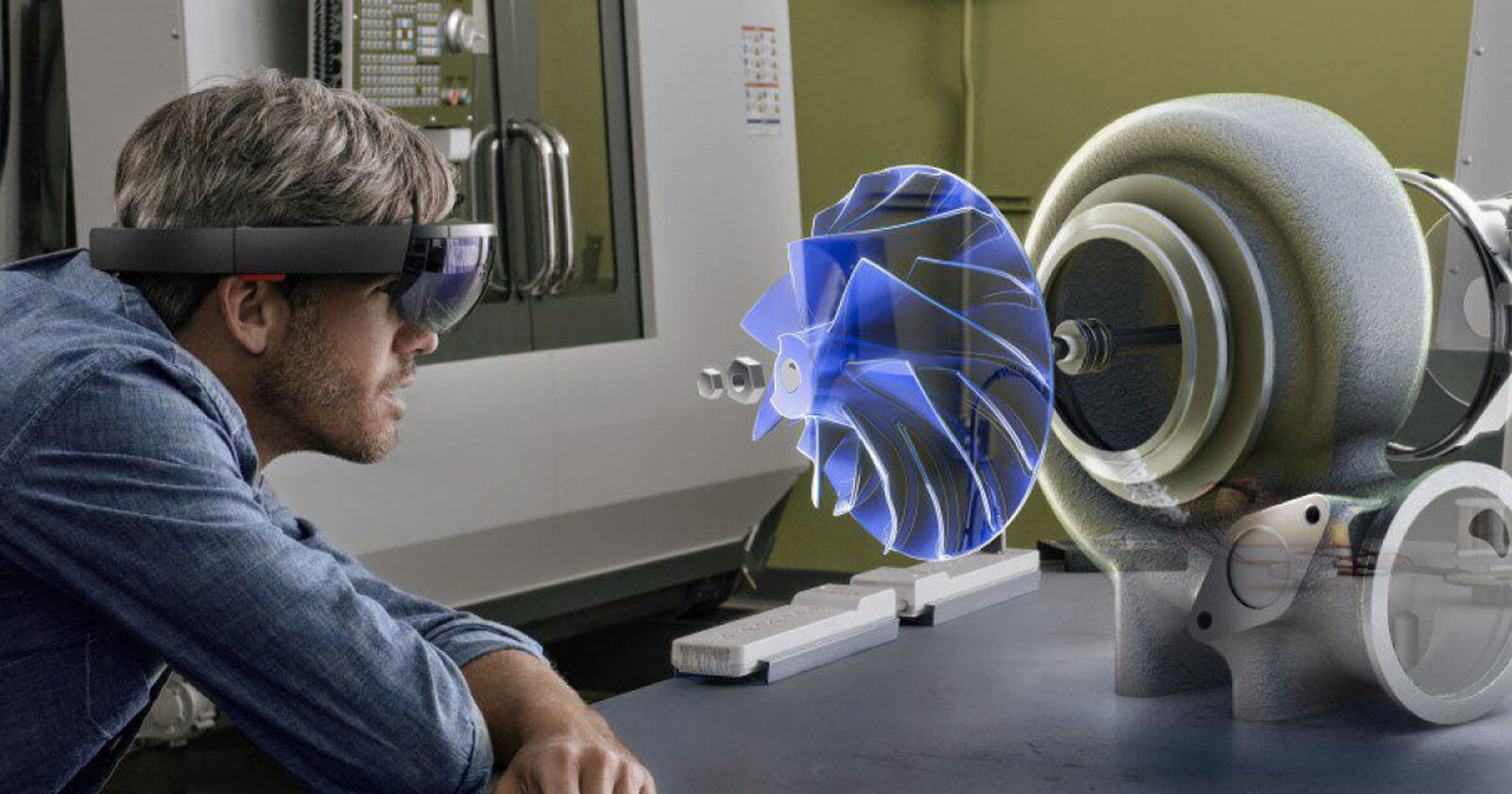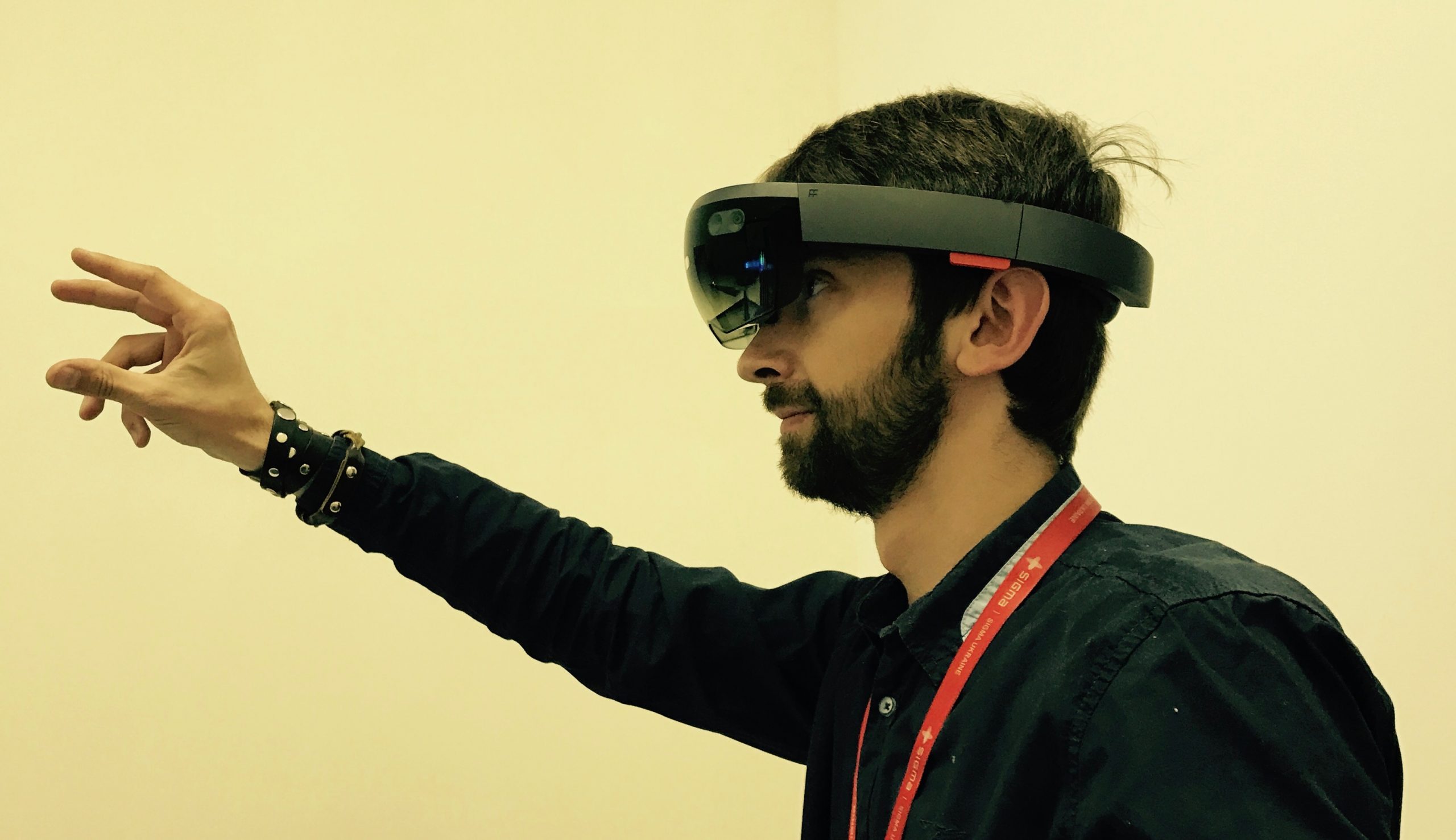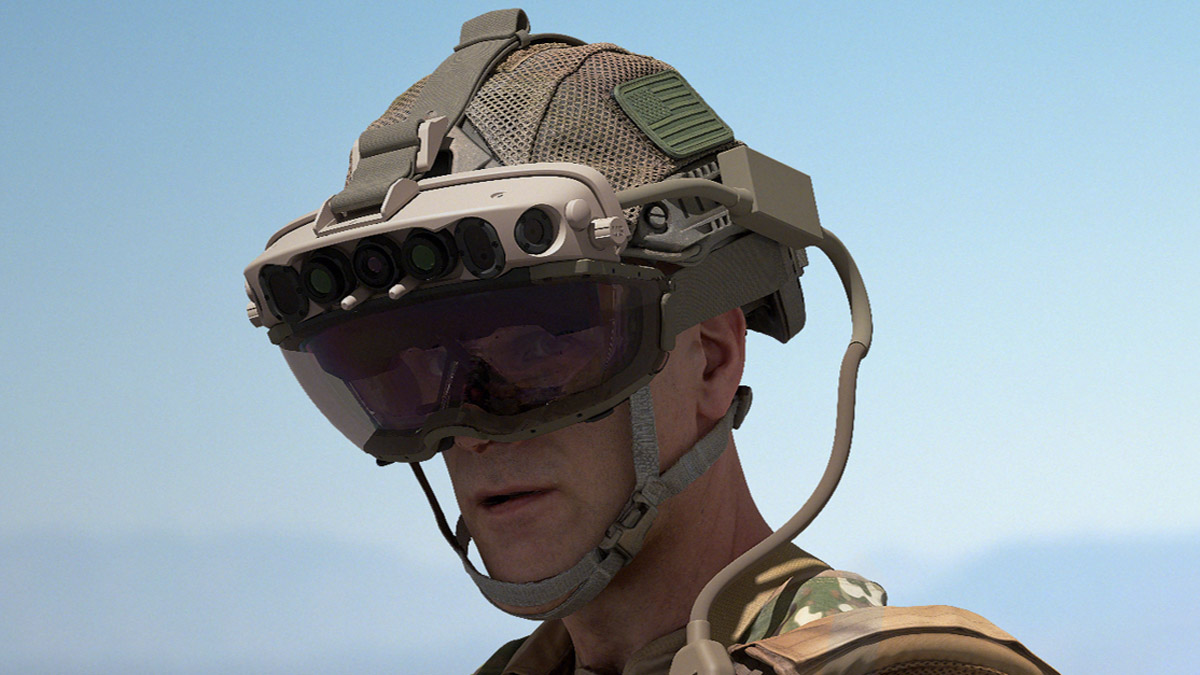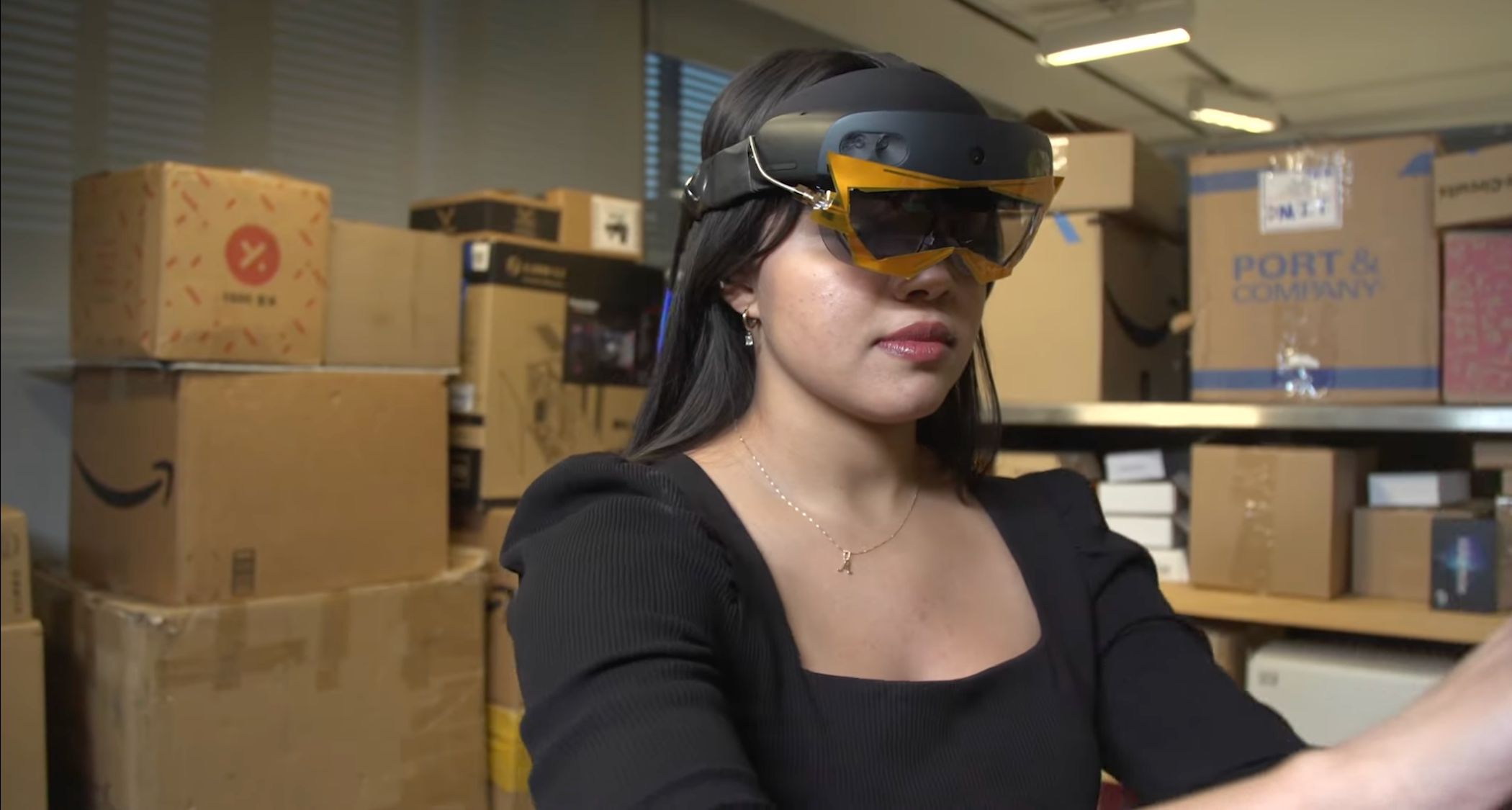Introduction
The emergence of the HoloLens technology has created a buzz in the tech industry, hinting at a future where augmented reality becomes an integral part of everyday life. Created by Microsoft, the HoloLens is a wearable device that combines virtual reality and augmented reality, allowing users to interact with holograms and digital content within their physical environment.
With its cutting-edge technology and immersive capabilities, the HoloLens has the potential to revolutionize various sectors, from communication and entertainment to healthcare and manufacturing. This article explores how the HoloLens is set to change the world as we know it.
Enhanced Communication:
One of the most significant impacts of the HoloLens is its potential to transform communication. With the ability to project holograms of individuals in real-time, people can communicate as if they were in the same room, regardless of their physical distance. This has incredible implications for businesses, allowing teams to collaborate seamlessly regardless of their geographical locations. Additionally, the HoloLens opens up new possibilities for remote learning, enabling educators to deliver immersive and interactive lessons to students across the globe.
Revolution in Gaming and Entertainment:
Gaming and entertainment industries are set to be disrupted by the HoloLens. With its holographic displays and motion tracking capabilities, the device provides an immersive gaming experience that goes beyond traditional consoles. Players can interact with virtual objects and characters in their own physical space, blurring the lines between the real and virtual worlds. Furthermore, the HoloLens opens up possibilities for interactive storytelling and experiential entertainment, where users can become a part of the narrative in a whole new way.
Transforming the Healthcare Industry:
In the healthcare industry, the HoloLens has the potential to revolutionize medical training, surgery, and patient care. Surgeons can benefit from holographic overlays of patient data, providing real-time assistance and guidance during complex procedures. Medical students can have immersive learning experiences, practicing surgical techniques on virtual patients. The HoloLens can also improve patient care by enabling doctors to visualize and explain medical conditions to their patients in a more accessible and engaging manner.
Advancing Education and Training:
The HoloLens holds immense potential in the realm of education and training. From interactive history lessons to virtual field trips, the device can transport students to different times and places, enhancing their learning experiences. Furthermore, professionals in various industries can benefit from virtual training simulations, allowing them to practice procedures and scenarios in a safe and controlled environment. The HoloLens has the power to democratize education and training, making high-quality learning experiences accessible to all.
Augmenting Manufacturing and Design:
In the manufacturing and design sectors, the HoloLens can streamline the product development process. Designers can visualize and manipulate prototypes in 3D, improving the efficiency of design iterations. Assembly line workers can benefit from step-by-step holographic instructions, reducing errors and increasing productivity. The HoloLens has the potential to catalyze innovation and creativity in these industries by providing new tools and perspectives.
Improving Remote Collaboration:
The HoloLens can revolutionize remote collaboration by allowing teams to work together in the same virtual space. Whether it’s brainstorming sessions or design reviews, team members can interact and collaborate on digital content regardless of their physical locations. The device brings a sense of presence and engagement that traditional video conferencing cannot match, fostering creativity and productivity among team members.
Enhancing Navigation and Exploration:
The HoloLens has the potential to change the way we navigate and explore our surroundings. With its spatial mapping capabilities, the device can overlay information and directions onto our physical environment, making navigation more intuitive and seamless. Imagine walking through a new city and having holographic guides provide you with directions and information about points of interest. The HoloLens opens up new possibilities for augmented reality tourism and enhances our overall understanding and interaction with the world around us.
Changing the Way We Interact with Computers:
Finally, the HoloLens has the potential to revolutionize the way we interact with computers. With gesture and voice recognition, users can navigate through digital interfaces without the need for traditional input devices. This opens up possibilities for more natural and intuitive interactions, making computing more accessible and user-friendly.
As we can see, the HoloLens technology has the potential to transform various sectors and reshape our daily experiences. From communication and entertainment to healthcare and manufacturing, its immersive capabilities and innovative features have the power to change the way we live, work, and interact. The future of augmented reality is here, and the HoloLens is at the forefront of this revolution.
Enhanced Communication
One of the most significant impacts of the HoloLens is its potential to transform communication. With the ability to project holograms of individuals in real-time, people can communicate as if they were in the same room, regardless of their physical distance. This has incredible implications for businesses, allowing teams to collaborate seamlessly regardless of their geographical locations. Additionally, the HoloLens opens up new possibilities for remote learning, enabling educators to deliver immersive and interactive lessons to students across the globe.
The HoloLens takes video conferencing to the next level by creating a sense of presence. Instead of seeing flat screens with people on them, users can see and interact with 3D holographic representations of their colleagues. This fosters a more natural and engaging form of communication, as facial expressions, body language, and spatial cues are preserved.
Imagine a global team working on a project – the HoloLens allows team members to have virtual meetings where they can see each other as if they were together in the same room. They can collaborate on shared documents, manipulate 3D models, and brainstorm ideas in a more immersive and intuitive manner. This not only enhances productivity but also strengthens team cohesion by bridging the physical divide.
As for education, the HoloLens opens up exciting possibilities for remote learning. Teachers can utilize the device to deliver virtual lessons to students, creating a dynamic and interactive learning environment. For example, history lessons can include holographic representations of historical figures and immersive virtual field trips to significant historical locations. Students can engage with the material in a whole new way, enhancing their understanding and retention of information.
Moreover, the HoloLens can overcome the limitations of distance and physical constraints in education. Students in remote areas or those with limited access to educational resources can benefit from the device’s ability to deliver high-quality content and experiences to their doorstep. This has the potential to bridge educational inequalities and provide equal opportunities for students worldwide.
Beyond business and education, the HoloLens has the potential to revolutionize communication for individuals as well. Imagine being able to have virtual face-to-face conversations with loved ones who live far away. The device can bring families and friends together, transcending the boundaries of distance. Celebrations, gatherings, and important life moments can be shared in a more personal and intimate way, as if everyone were physically present.
In summary, the HoloLens has the power to enhance communication by creating a sense of presence and breaking down physical barriers. Whether in business, education, or personal relationships, the device opens up new possibilities for collaboration, learning, and connection. The future of communication is here, and it’s a holographic one.
Revolution in Gaming and Entertainment
The HoloLens is poised to revolutionize the gaming and entertainment industries, pushing the boundaries of what is possible in immersive experiences. With its holographic displays and precise motion tracking capabilities, the device offers gamers a whole new dimension of interaction and engagement.
Traditional gaming consoles and virtual reality headsets have provided players with thrilling experiences, but the HoloLens takes it a step further by merging the real and virtual worlds. Players can see holograms projected into their physical space, allowing for a more integrated and interactive gaming experience. They can manipulate virtual objects with their hands, move around physical obstacles, and incorporate their surroundings into the game environment.
Imagine battling holographic enemies in your living room or building virtual structures on your tabletop. The HoloLens brings the game world directly into your physical space, blurring the lines between reality and fantasy. The level of immersion and interactivity offered by the device creates a truly unique and captivating gaming experience.
Furthermore, the HoloLens has the potential to revolutionize storytelling and experiential entertainment. Instead of simply being passive observers, users can become active participants in the narrative. They can interact with holographic characters, solve puzzles in their physical environment, and influence the outcome of the story. This opens up exciting possibilities for interactive storytelling and personalized entertainment experiences.
Not only does the HoloLens enhance gaming experiences, but it also has the potential to transform other forms of entertainment. Imagine attending a live concert from the comfort of your own home, with holographic performers appearing on stage and immersive visuals surrounding you. Or imagine watching a movie where characters and objects seamlessly blend into your living room, creating a truly cinematic experience.
The HoloLens also promises to revolutionize the way we consume and interact with media. Traditional interfaces such as smartphones and tablets might become obsolete as we navigate through digital content using gestures and voice commands. With the HoloLens, we can access and manipulate media in a more intuitive and natural way, further blurring the boundaries between the physical and digital realms.
In summary, the HoloLens has the potential to completely revolutionize the gaming and entertainment industries. By combining holographic displays, motion tracking, and interactive storytelling, the device offers gamers and consumers a whole new level of immersion and engagement. The future of gaming and entertainment is set to be transformed by the HoloLens, opening up a world of possibilities for both creators and consumers.
Transforming the Healthcare Industry
The HoloLens holds immense potential for transforming the healthcare industry, revolutionizing medical training, surgery, and patient care. With its holographic overlays and real-time guidance, the device can provide healthcare professionals with enhanced tools and capabilities that can improve outcomes and efficiency in healthcare practices.
One area in which the HoloLens can make a significant impact is in surgical procedures. Surgeons can benefit from holographic displays of patient data, including imaging scans and vital signs, overlaid directly onto their field of vision. This real-time visual assistance can provide surgeons with precise guidance, helping them navigate complex anatomical structures and reducing the risk of errors during procedures.
Furthermore, medical students can have immersive learning experiences using the HoloLens. They can practice surgical techniques on virtual patients, allowing for repeated practice and skill development in a safe and controlled environment. The device can simulate realistic scenarios, such as emergency situations or rare medical conditions, enabling students to gain valuable experience and confidence before entering the operating room.
Moreover, the HoloLens has the potential to improve patient care by enhancing communication and understanding between healthcare professionals and patients. Doctors can use holographic visualizations to explain medical conditions, treatment options, and procedures in a more accessible and engaging manner. This can help patients make informed decisions about their healthcare and alleviate anxiety or confusion related to medical procedures.
Another area in which the HoloLens can have a transformative impact is in telemedicine. The device can enable remote consultations and virtual examinations, allowing healthcare providers to reach patients in remote or underserved areas. Patients can wear the HoloLens while a healthcare professional guides them through a physical examination, visualizing and diagnosing conditions in real-time. This can significantly improve access to healthcare services, especially for those who face geographical or mobility barriers.
Furthermore, the HoloLens can assist in rehabilitation and physical therapy. Patients can receive real-time feedback and guidance through holographic imagery, helping them perform exercises correctly and track their progress. This can improve patient compliance, outcomes, and overall rehabilitation experience.
Overall, the HoloLens has the potential to transform the healthcare industry by improving surgical procedures, enhancing medical education, enhancing patient communication, enabling remote consultations, and improving rehabilitation and physical therapy. By integrating holographic technology into healthcare practices, the device has the power to advance the quality of care, improve patient outcomes, and enhance the overall healthcare experience.
Advancing Education and Training
The HoloLens holds great potential in advancing education and training by providing immersive and interactive experiences that go beyond traditional learning methods. The device can revolutionize the way we engage with educational content, opening up new possibilities for both students and professionals.
One of the key benefits of the HoloLens in education is its ability to transport students to different times and places through augmented reality. For example, history lessons can come to life with holographic representations of historical figures and immersive virtual field trips to significant locations. This provides students with a more engaging and memorable learning experience, fostering a deeper understanding and connection to the subject matter.
The HoloLens can also enhance STEM education by allowing students to visualize complex concepts in a more interactive way. For instance, students studying biology can examine 3D holographic models of cells, organs, and biological processes. This hands-on approach to learning can improve comprehension and retention of scientific principles.
Furthermore, the device can democratize access to quality education. With the HoloLens, students in remote or underprivileged areas can have access to high-quality content and experiences, eliminating geographical and socioeconomic barriers. This promotes inclusivity and equal opportunities for all students, regardless of their location or background.
Professionals in various industries can also benefit from the HoloLens in terms of training and skill development. The device can provide virtual simulations and scenarios for professionals to practice procedures and scenarios in a safe and controlled environment. For instance, surgeons can rehearse complex surgeries, pilots can undergo virtual flight training, and engineers can manipulate 3D models for design and prototyping.
Additionally, the HoloLens can enhance vocational training by providing learners with real-time guidance and assistance. For example, automobile mechanics can follow holographic step-by-step instructions for complex repairs, allowing them to work more efficiently and accurately. This reduces the need for costly and time-consuming physical demonstrations and increases the accessibility of vocational training.
Moreover, the HoloLens can facilitate remote learning and collaboration. Educators can use the device to deliver virtual lessons, engage with students in real-time, and foster interactive discussions. Students can collaborate on projects and share ideas, regardless of their physical location. The HoloLens brings a sense of presence and engagement to remote learning, making it feel more personal and connected.
Overall, the HoloLens has the potential to advance education and training by providing immersive and interactive experiences. It can transform traditional learning methods, democratize access to quality education, enhance skill development, and facilitate remote collaboration. The future of education is set to be transformed by the HoloLens, creating a more engaging, inclusive, and effective learning environment.
Augmenting Manufacturing and Design
The HoloLens has the potential to revolutionize the manufacturing and design sectors by augmenting traditional processes and providing new tools for innovation and creativity. With its holographic capabilities and spatial mapping, the device can transform the way products are designed, manufactured, and assembled.
One significant application of the HoloLens in manufacturing is in the design process. Designers can visualize and manipulate 3D models in a more intuitive and immersive manner. Instead of relying on 2D blueprints or computer screens, they can see holographic representations of their designs projected directly into their physical space. This allows for a more accurate evaluation of the design, identifying potential flaws or improvements before moving to the physical prototype stage.
The device can also facilitate collaboration among design teams. Multiple users can wear the HoloLens and view and interact with the same holographic design simultaneously. This enables real-time collaboration, where team members can provide feedback, make adjustments, and discuss ideas in a more dynamic and immersive environment. It streamlines communication and reduces the need for physical prototypes and frequent meetings, saving time and resources during the design iteration process.
Furthermore, the HoloLens can improve the efficiency and accuracy of assembly line workers. With holographic instructions overlaid onto their physical environment, workers can easily follow step-by-step guides for complex assembly tasks. This minimizes errors and reduces training time, as workers can have real-time visual aids guiding them through the process. The device can also incorporate quality control measures, highlighting potential issues or defects in real-time, ensuring a higher level of precision and consistency in manufacturing.
The HoloLens can also enable remote assistance and collaboration in manufacturing processes. Experts can remotely connect with on-site workers wearing the device, providing guidance, troubleshooting, and real-time support. This reduces the need for travel and expedites problem-solving, resulting in faster production times and reduced downtime in case of issues or maintenance.
Additionally, the HoloLens opens up new possibilities for innovative and creative design. Designers can experiment with virtual prototypes, testing different materials, textures, and functions in a virtual space before committing to physical production. This promotes a more iterative and efficient design process, where ideas can be refined and optimized rapidly. The device can also enable designers to visualize the impact of their designs in real-world environments, allowing for more accurate and contextual decision-making.
In summary, the HoloLens has the potential to revolutionize manufacturing and design by augmenting traditional processes and providing innovative tools for collaboration and creativity. From visualizing and manipulating 3D models to assisting in assembly tasks and enabling remote collaboration, the device enhances efficiency, accuracy, and innovation in these industries. The future of manufacturing and design is set to be transformed by the HoloLens, unlocking new possibilities for product development and improving overall efficiency and quality.
Improving Remote Collaboration
The HoloLens has the potential to revolutionize remote collaboration by allowing teams to work together in the same virtual space, regardless of their physical locations. With its holographic displays, spatial mapping, and advanced communication capabilities, the device creates a more immersive and engaging collaboration experience.
Traditional video conferencing tools have limitations, such as flat screens and limited interactivity. However, with the HoloLens, teams can interact and collaborate on digital content as if they were physically present in the same room. They can see and manipulate holograms, share ideas, and work together on projects in a more intuitive and lifelike manner. This fosters creativity and productivity, breaking down the barriers of distance and facilitating seamless teamwork.
Imagine a team of architects collaborating on a building design. Instead of viewing the design on separate screens, they can all wear the HoloLens and see a three-dimensional holographic representation projected in their physical space. They can walk around the virtual model, make real-time adjustments, and provide feedback to each other in a more immersive and engaging way.
The HoloLens also enables real-time annotation and markup, allowing team members to virtually draw and write on shared content. This not only enhances communication but also streamlines the decision-making process, as visual ideas and suggestions can be captured and incorporated directly into the digital workspace.
Furthermore, the HoloLens can facilitate more natural and intuitive interactions during remote collaboration. Users can navigate through digital interfaces using gestures and voice commands, eliminating the need for traditional input devices. This creates a more seamless and fluid collaboration experience, reducing the friction and barriers that often arise when working remotely.
Remote collaboration is not limited to the same team but can also extend to external stakeholders, such as clients and partners. With the HoloLens, these stakeholders can be virtually present in meetings and discussions, enabling a more inclusive and participatory collaboration process. This promotes transparency, strengthens relationships, and enhances the overall success of projects.
In addition, the HoloLens opens up possibilities for remote training and presentations. Educators or leaders can use the device to deliver immersive and interactive presentations to remote audiences, maintaining engagement and increasing knowledge retention. This is especially valuable in situations where travel or physical presence is not feasible or convenient.
In summary, the HoloLens improves remote collaboration by creating a more immersive and engaging collaboration experience. With its holographic capabilities, real-time annotation, and natural interactions, the device allows teams to work together as if they were physically present, breaking down the barriers of distance and enhancing creativity and productivity. The future of collaboration is set to be transformed by the HoloLens, enabling teams to achieve seamless and impactful outcomes regardless of their physical locations.
Enhancing Navigation and Exploration
The HoloLens has the potential to revolutionize the way we navigate and explore our surroundings, offering enhanced capabilities for both indoor and outdoor environments. With its spatial mapping and holographic overlays, the device can provide real-time information, improve navigation, and enhance our overall understanding and interaction with the world around us.
When it comes to navigation, the HoloLens can augment our physical environment with digital overlays. For example, imagine walking through a new city and having holographic guides providing you with directions and information about points of interest. This can make navigating unfamiliar locations more intuitive and seamless, reducing the reliance on traditional maps and GPS systems.
In addition to providing directional guidance, the HoloLens can offer contextual information about our surroundings. For example, while exploring a museum, the device can display relevant details about artwork or artifacts, providing a richer and more immersive experience. This enhances our understanding and appreciation of cultural spaces, historical sites, and natural landmarks.
The device can also enhance outdoor exploration by overlaying digital information onto the physical environment. Hikers, for example, can benefit from trail markers, danger warnings, or points of interest projected into their field of view, improving safety and providing an interactive navigation experience. Moreover, the HoloLens can enable virtual guides or simulations to enhance educational experiences in outdoor settings, such as national parks or historical landmarks.
Indoor navigation is another area where the HoloLens can have a significant impact. In large public spaces like airports, shopping malls, or convention centers, the device can provide clear directions, navigation aids, and information about nearby facilities. This can reduce confusion, save time, and enhance the overall visitor experience.
Beyond navigation, the HoloLens can also assist in design and construction projects. For architects and interior designers, the device can overlay virtual models onto physical spaces, allowing for real-time visualization and assessment of design concepts. This can facilitate better decision-making, spatial planning, and communication with clients or stakeholders.
In the field of manufacturing or assembly line operations, the HoloLens can help workers visualize assembly instructions, highlighting steps or components, reducing errors, and improving efficiency. This simplifies complex processes, minimizes training time, and enhances overall productivity.
In summary, the HoloLens has the potential to enhance navigation and exploration by overlaying digital information onto the physical environment. From providing directions and contextual information to improving safety and facilitating design and construction projects, the device improves our understanding, interaction, and efficiency in various environments. The future of navigation and exploration is set to be transformed by the HoloLens, creating a more intuitive and immersive way to navigate and discover the world around us.
Changing the Way We Interact with Computers
The HoloLens has the potential to revolutionize the way we interact with computers, offering a more natural and intuitive user interface that goes beyond traditional input devices such as keyboards and mice. With its gesture and voice recognition capabilities, the device allows for more immersive and hands-free interactions, transforming the way we engage with digital content.
One of the key advantages of the HoloLens is its ability to interpret gestures and hand movements as input commands. Users can navigate through digital interfaces by simply reaching out and grabbing, dragging, or resizing holographic objects. This provides a more direct and tactile interaction, replicating real-world movements and making computing a more intuitive and tangible experience.
Voice recognition is another powerful feature of the HoloLens, enabling users to communicate with their devices through natural language commands. Instead of typing or clicking, users can simply speak to perform actions, search for information, or access specific functions. This hands-free approach allows for greater flexibility and efficiency, particularly in situations where physical interaction may be challenging or inconvenient.
The HoloLens also has the potential to eliminate the need for traditional computer screens and monitors. With its holographic displays, users can directly visualize and interact with digital content in their physical environment. This opens up possibilities for a more seamless and integrated computing experience, where digital information seamlessly blends into our surroundings.
Furthermore, the HoloLens creates a personalized and adaptive user interface that can adapt to our needs and preferences. The device can learn from our behaviors and interactions, making computing more personalized and tailored to individual users. This can lead to a more efficient and intuitive workflow, as the device anticipates our intentions and automates certain tasks or processes.
With its ability to merge the physical and digital worlds, the HoloLens also has the potential to transform productivity and collaboration. Users can view and interact with shared holographic content in real-time, regardless of their physical locations. Whether it’s brainstorming sessions, problem-solving, or design reviews, team members can collaborate and work together on digital content as if they were co-located in the same physical space.
In addition to these features, the HoloLens can also enhance accessibility for individuals with physical or visual impairments. The device can provide visual and audio cues, augmenting the physical environment to assist with various tasks and activities. This inclusivity opens up new opportunities for individuals who may face challenges in traditional computer interactions.
In summary, the HoloLens is set to change the way we interact with computers by offering more intuitive, hands-free, and immersive experiences. Through gesture and voice recognition, holographic displays, and personalized interfaces, the device enhances productivity, collaboration, and accessibility. The future of computing is set to be transformed by the HoloLens, ushering in a new era of natural and seamless interaction with digital content.
Conclusion
The HoloLens has the potential to revolutionize various sectors and reshape our daily experiences. From communication and entertainment to healthcare and manufacturing, its immersive capabilities and innovative features have the power to change the way we live, work, and interact.
Through enhanced communication, the HoloLens enables seamless collaboration and remote learning, bridging the gap between individuals and providing new opportunities for global connections.
In the world of gaming and entertainment, the device immerses users in virtual worlds, offering interactive experiences that blur the lines between reality and fantasy. It opens up new possibilities for interactive storytelling and personalized entertainment.
In healthcare, the HoloLens has the potential to revolutionize medical training, surgery, and patient care. It enhances surgical procedures, improves medical education, and facilitates remote consultations, ultimately improving the quality and accessibility of healthcare services.
In education and training, the HoloLens opens doors to immersive and interactive learning experiences. It transports students to different times and places, empowers professionals with virtual training simulations, and democratizes access to quality education.
In manufacturing and design, the HoloLens enhances the design process, streamlines production, and enables remote collaboration. It brings holographic visualization and guidance to assembly line workers, revolutionizing how products are crafted and assembled.
The HoloLens also improves remote collaboration, allowing teams to work together as if they were physically present. It enhances communication, fosters creativity, and breaks down the barriers of distance, making collaboration more seamless and impactful.
Furthermore, the HoloLens enhances navigation and exploration, overlaying digital information onto the physical environment. It revolutionizes how we navigate through cities, explore outdoor environments, and interact with cultural spaces, providing contextual information and improving our overall understanding and engagement.
Lastly, the HoloLens changes the way we interact with computers, offering a more natural and intuitive user interface. It merges the physical and digital worlds, enabling gesture and voice recognition, and creating personalized and adaptive interfaces.
In conclusion, the HoloLens is at the forefront of a technological revolution. As it continues to advance and evolve, its impact on various sectors will only intensify. The future of augmented reality is here, and the HoloLens is leading the way towards a more immersive, interconnected, and transformative world.







